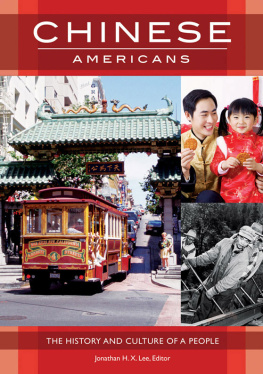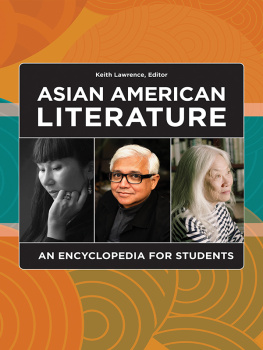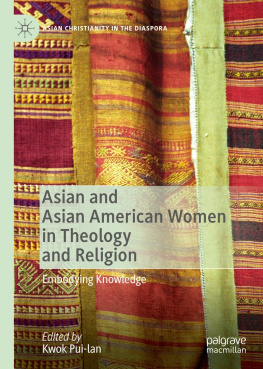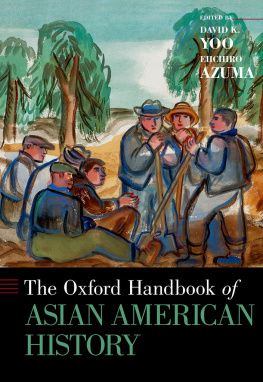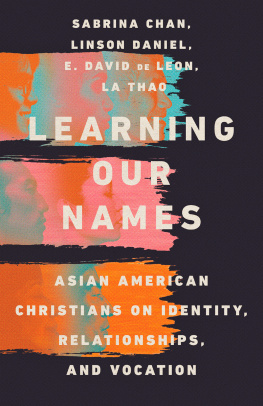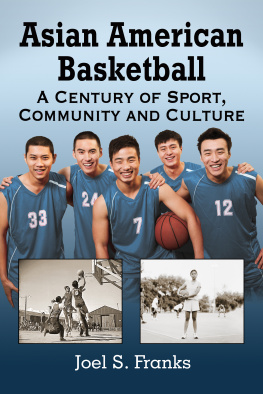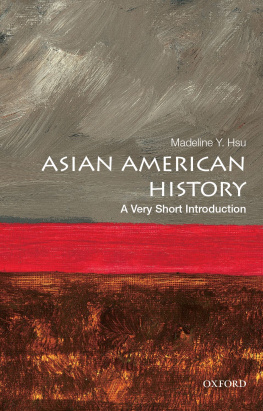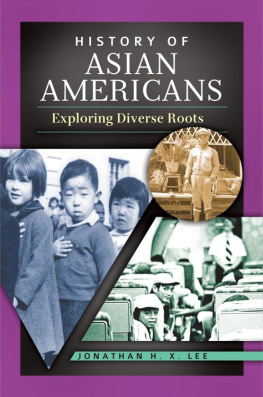Jonathan H. X. Lee
All rights reserved. No part of this publication may be reproduced, stored in a retrieval system, or transmitted, in any form or by any means, electronic, mechanical, photocopying, recording, or otherwise, except for the inclusion of brief quotations in a review, without prior permission in writing from the publisher.
Names: Lee, Jonathan H. X., author.
Title: Asian American history day by day : a reference guide to events / Jonathan H. X. Lee.
Description: Santa Barbara, California : Greenwood, an Imprint of ABC-CLIO, LLC, [2018] | Includes bibliographical references and index.
Identifiers: LCCN 2018014677 (print) | LCCN 2018028819 (ebook) | ISBN 9780313399282 (ebook) | ISBN 9780313399275 (alk. paper)
Subjects: LCSH: Asian AmericansHistory.
Classification: LCC E184.A75 (ebook) | LCC E184.A75 L444 2018 (print) | DDC 973/.0495dc23
LC record available at https://lccn.loc.gov/2018014677
This book is also available as an eBook.
There are many people to express my sincere gratitude to for the completion of this endeavor. First and foremost, I would like to thank all the good people at ABC-CLIO who invited me to take on this challenging volume. In particular, I wish to thank Kim Kennedy White, my editor for this project, who has been extraordinarily patient and understanding with me. Second, I wish to thank my colleagues at San Francisco State University who shared resources with me and answered my questions in their area of research. Third, to my students who remind me, every day, of the value and importance of this work in shaping their identity and cultivating their purpose. Fourth, I wish to thank my partner, Mark S. Quady, for providing me the time to conduct research and write. Lastly, I wish to thank all my colleagues in the field of Asian American studies, whose scholarship informed the content of this volume.
Compared to the Indigenous, African Americans, and Lationas/os, the Asian American experience is relatively shortroughly 140 years. Although the historical experiences of Asian Americans are relatively short, it is rich and robust. In addition, it is diverse, multigenerational, and multidimensional. In Asian American History Day by Day: A Reference Guide to Events , I attempt to add to the promotion of Asian American cultures and document the Asian American experience. This volume showcases, highlights, and invites attention to significant historical eventsnational and transnationalas well as quotidian, everyday life. The experiences of Asian Americans in this volume include, but are not limited to, contributions to American history, polity, economy, society, education, science, technology, pop culture, music, sports, literature, arts, television, film, journalism, and much more. The events reveal struggle, pain, loss, violence, hope, determination, resistance, renewal, life, death, healing, growth, acceptance, and achievements by peoplesignificant and not so significant. Asian American places, historical and contemporary, secular and sacred, are also documented to be remembered. Moreover, I include members of the Asian American community who have been marginalized and invisiblemixed-race, queer, and transgender Asian Americans. The completion of this volume makes clear the need for scholarship on new post-1965 Asian American communities and histories of Laotian, Hmong, Thai, Indonesian, Burmese, Tibetans, Nepali, Pakistani, and Sir Lankan Americans. I offer my sincere apology to anyone whose community is not represented or reflected in this volume. While I made diligent attempts to cover the mosaic of Asian American histories and cultures, I know I have not covered all, as I originally desired. I therefore invite students and others to take part in this important work of documenting and preserving the histories of Asian Americans. I also wish to point out that although the World Wide Web is a tremendous tool, web resources often come and go. During the time it took to research and write this volume, some websites I used disappeared, and were replaced with new ones during the production process. The availability of all websites used is not guaranteed, and this may cause some frustration for students. Nonetheless, I do hope this volume is useful, as a document that attests to the spirit of Asian Americans, whose contribution to the development of the United Statesphysical, geographic, cultural, economic, political, socialis attested to on the following pages. Asian Americans have played and continue to play a critical role in advancing civil rights, social justice, gender equality, and educational equity that holds institutions in the United States accountable to the ideals established in the Constitution and Bill of Rights. This work is not yet complete as the content of this volume reveals, in particular in the post9/11 terrorist attack era and current rise of white supremacist, nativist, and xenophobic sentiments. Asian Americans have encountered these oppressive forces before, and Asian Americans are ready, as events in this volume illustrate, to fight back and claim this land as our land, not just for ourselves but for all Americans yearning to breathe free.
January 1
1877
Labor leader Denis Kearney, an Irish immigrant, organizes anti-Chinese movement in San Francisco and leads violent attacks on the Chinese in San Francisco. He formed the Workingmens Party of California alleging Chinese workers took lower wages, poorer conditions, and longer hours than white workers were willing to tolerate. The slogan The Chinese Must Go was being widely repeated. The Workingmens Party successfully elected candidates to state office and will therefore influence California policies for decades.
Excerpt from Kearneys appeal to California for support to banish the Chinese from Americas shores.
To add to our misery and despair, a bloated aristocracy has sent to Chinathe greatest and oldest despotism in the worldfor a cheap working slave. It rakes the slums of Asia to find the meanest slave on earththe Chinese coolieand imports him here to meet the free American in the Labor market, and still further widen the breach between the rich and the poor, still further to degrade white Labor....
These cheap slaves fill every place. Their dress is scant and cheap. Their food is rice from China. They hedge twenty in a room, ten by ten. They are wipped curs, abject in docility, mean, contemptible and obedient in all things. They have no wives, children or dependents....
They are imported by companies, controlled as serfs, worked like slaves, and at last go back to China with all their earnings. They are in every place, they seem to have no sex. Boys work, girls work; it is all alike to them....


